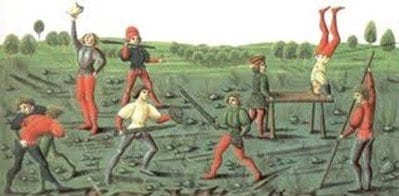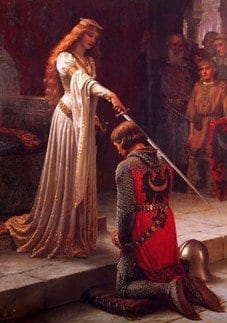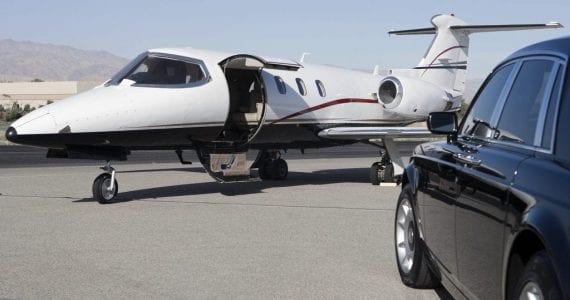Every army has a Special Forces team; A group of individuals that are the absolute best at what they do. You call them if you want to get the job done. In medieval Europe, Knights were the very best. Today, however, we hardly know anything about knights. For most of us, we only know stuff we watched on Game of Thrones, but the history is just as interesting.
Here are some fascinating facts about your favorite armored warriors.
Origin of Knighthood – Knights were a group of elite warriors that rode to combat on huge armored warhorses. Because of this, it is believed that the concept of knighthood originated way before the middle ages. During the height of the Roman Empire, there was an elite mounted order called the Ordo Equestris, which some believe to be one of the earliest signs of knighthood. The Ordo Equestris, similarly to knights, were lesser nobles who fought on horseback and commanded some influence. However, the widely accepted origin of knighthood was when Emperor Charlemagne of the Franks combined a mounted and armored nobleman class with the concept of feudalism.
Suit of Armor – A suit of armor was highly expensive back in the day. Well, it beats being shot full of arrows, right? The first knights’ armor was just padded or leather armors with a chain mail which provided minimal protection, but was surely better than going into battle in your birthday suit. As technology progressed, plate armor and full plate armor became the norm for knights. It weighed around 50 pounds and was much more effective than chain mail when it comes to deflecting blows. Surprisingly, it didn’t restrict your movements as much as you’d think it would!
 Training – A knight’s training, which would usually start at the age of seven, lasted for 14 years. They would first need to serve as a page for their lord – which was just a better sounding name for a servant or an errand boy. Boys were pages from 7 to 14 years old, while during this time, they were trained in horse-riding and weapon use(kids these days can’t even run with scissors). When they reached the age of 14, they graduated and became squires. A squire served a specific knight. They were like nannies or butlers; they helped maintain the knight’s armor and weapons and were even tasked to help the knight donning and removing his suit of armor. A squire was deemed worthy of fighting on the battlefield with the knight, so in turn, he was expected to be able to handle himself during a battle. At the age of 21, the squire was finally anointed to become a knight. The knighting process was initially called “dubbing” (not to be confused with “dabbing”). Before it was just a slap on the squire’s neck and saying of a few words; eventually, the church made it into the ceremonial event we are familiar with today.
Training – A knight’s training, which would usually start at the age of seven, lasted for 14 years. They would first need to serve as a page for their lord – which was just a better sounding name for a servant or an errand boy. Boys were pages from 7 to 14 years old, while during this time, they were trained in horse-riding and weapon use(kids these days can’t even run with scissors). When they reached the age of 14, they graduated and became squires. A squire served a specific knight. They were like nannies or butlers; they helped maintain the knight’s armor and weapons and were even tasked to help the knight donning and removing his suit of armor. A squire was deemed worthy of fighting on the battlefield with the knight, so in turn, he was expected to be able to handle himself during a battle. At the age of 21, the squire was finally anointed to become a knight. The knighting process was initially called “dubbing” (not to be confused with “dabbing”). Before it was just a slap on the squire’s neck and saying of a few words; eventually, the church made it into the ceremonial event we are familiar with today.
 Chivalry – They say that “chivalry is dead”, but is it? Chivalry was a code of knightly conduct. There were parts of it that extended to everyday behavior. The surviving codes of conduct were very strict, but most parts of them were all about knightly conduct on the battlefield. Chivalrous behavior was a must during social gatherings and events, since knights were, before anything else, noblemen. Nonetheless, once on the battlefield, knights rarely followed the chivalric code – they butchered and pillaged like everyone else. So, if anyone says to you that “chivalry is dead”, you may as well demand a trial by combat to prove that chivalry is, in fact, alive and kicking.
Chivalry – They say that “chivalry is dead”, but is it? Chivalry was a code of knightly conduct. There were parts of it that extended to everyday behavior. The surviving codes of conduct were very strict, but most parts of them were all about knightly conduct on the battlefield. Chivalrous behavior was a must during social gatherings and events, since knights were, before anything else, noblemen. Nonetheless, once on the battlefield, knights rarely followed the chivalric code – they butchered and pillaged like everyone else. So, if anyone says to you that “chivalry is dead”, you may as well demand a trial by combat to prove that chivalry is, in fact, alive and kicking.
Modern Knighthood – Today, there are still knights. But they aren’t the mounted and armored warriors one may expect. Knighthood today is more of a ceremonial title given to an individual that has had a great contribution to society. Famous knighted celebrities include Sean Connery (James Bond), Patrick Stewart (Professor X), Ian McKellen (Magneto), and even Bill Gates. Don’t expect any of these modern knights to don a suit of armor and fight in a duel.




